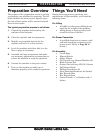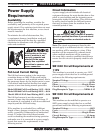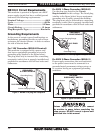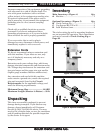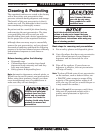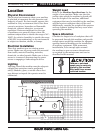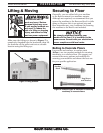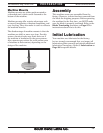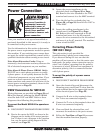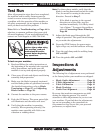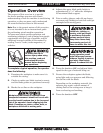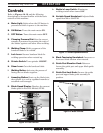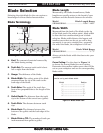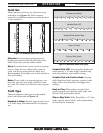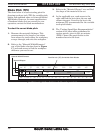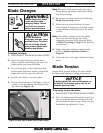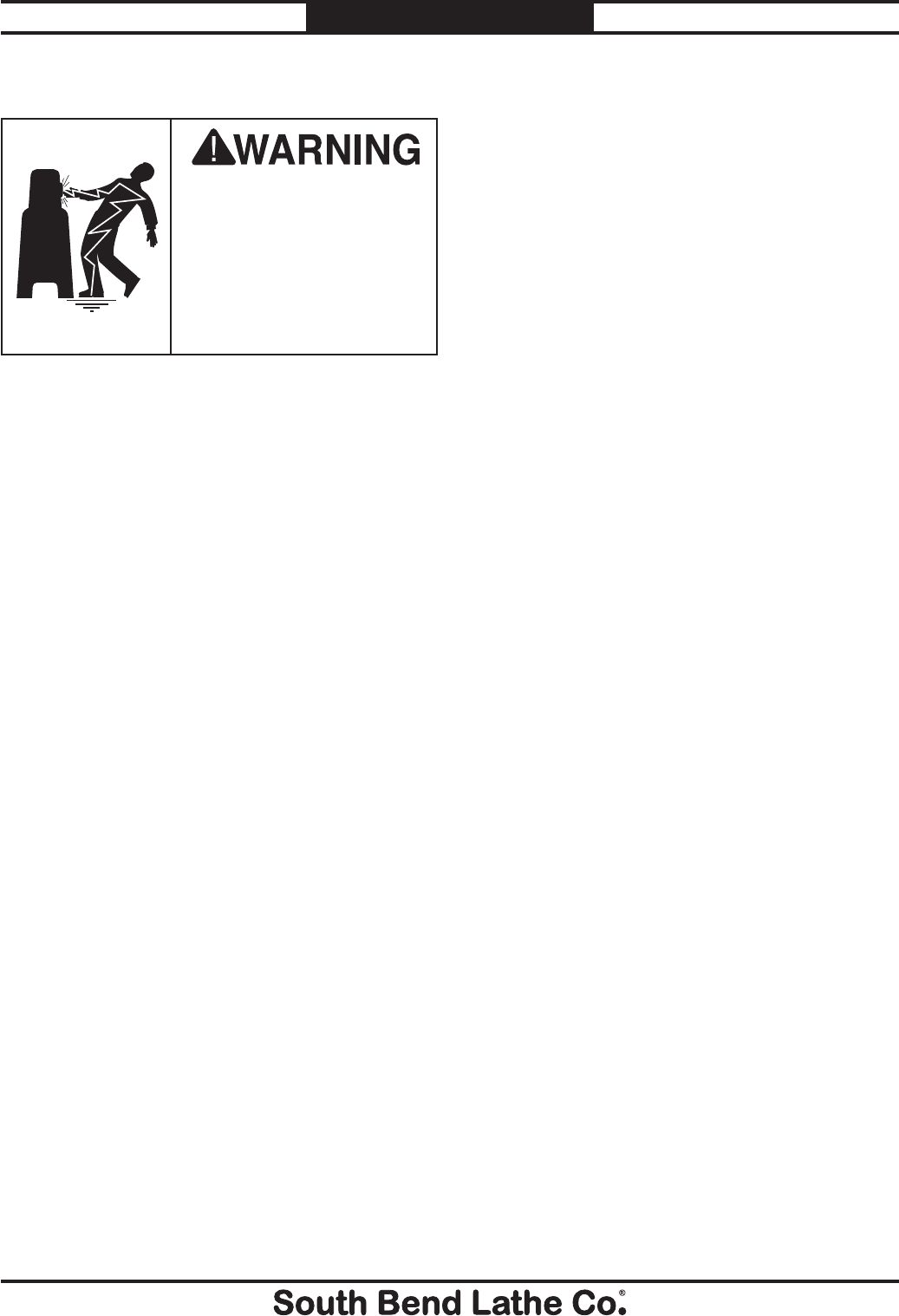
-20-
For Machines Mfg. Since 8/09
Model SB1040/SB1041
PREPARATION
Power Connection
Electrocution or fire
may occur if machine is
ungrounded, incorrectly
connected to power, or
connected to an undersized
circuit. Use a qualified
electrician to ensure a safe
power connection.
Once your machine is set up and assembled as
previously described in this manual, it is ready to
be connected to the power source.
Use the information in this section to determine
the power source requirements needed to operate
this machine. If your existing power source does
not meet the stated requirements, consult with a
qualified electrician about running a new circuit.
Note About Extension Cords: Using an
incorrectly sized extension cord may decrease the
life of electrical components on your machine.
Note About 3-Phase Power (SB1041 Only):
DO NOT use a static phase converter to create
3-phase power—it can quickly decrease the life
of electrical components on your machine. If you
must use a phase converter, only use a rotary
phase converter and connect the wild wire to the
correct power connection terminal, shown in the
wiring diagram on Page 53.
220V Conversion for SB1040
Wiring diagrams are provided on Pages 50 and
52 in this manual, showing the Model SB1040
wired for both 110V and 220V. Refer to these
diagrams when following this procedure.
To convert the Model SB1040 to operate on
220V:
1. DISCONNECT BANDSAW FROM POWER!
2. Rewire the motor for 220V, as shown in the
diagram on the inside of the motor junction
box. If there is not a diagram in the junction
box, use the motor wiring diagram in this
manual (see Page 52).
3. Locate the power transformer in the
electrical panel (see Figure 56 on Page
54). Remove the wire attached to the 110V
terminal and connect it to the 220V terminal.
4. Turn the dial on the overload relay (see
Figure 56 on Page 54) from 14A for 110V to
7A for 220V.
5. Locate the welding transformer in the
control panel (see Figure 55 on Page
54). Remove the wire connected to the #2
terminal and move it to the #5 terminal;
remove the wire connected to the #4 terminal
and move it to the #7 terminal. The machine
is now wired for 220V.
Correcting Phase Polarity
(SB1041 Only)
This sub-section is only provided for
troubleshooting 3-phase power connections.
If you discover during the test run that the
machine will not operate, or that the motor runs
backwards, the power source connection may be
wired "out of phase," meaning that the polarity
is incorrect as wired. Without test equipment to
determine polarity, this is a common situation
with 3-phase power.
To correct the polarity of a power source
connection:
1. DISCONNECT MACHINE FROM POWER!
2. Open the electrical box and disconnect the
incoming power cord R and T wires from the
main terminal bar in the upper right corner
of the electrical panel (see Page 53).
3. Connect the R wire to the terminal where
the T wire was connected originally.
4. Connect the T wire to the terminal where the
R wire was connected originally.
5. Close and latch the electrical box, and
reconnect the machine to the power source.
6. Follow the Test Run on Page 21 to ensure
that the machine functions properly.



